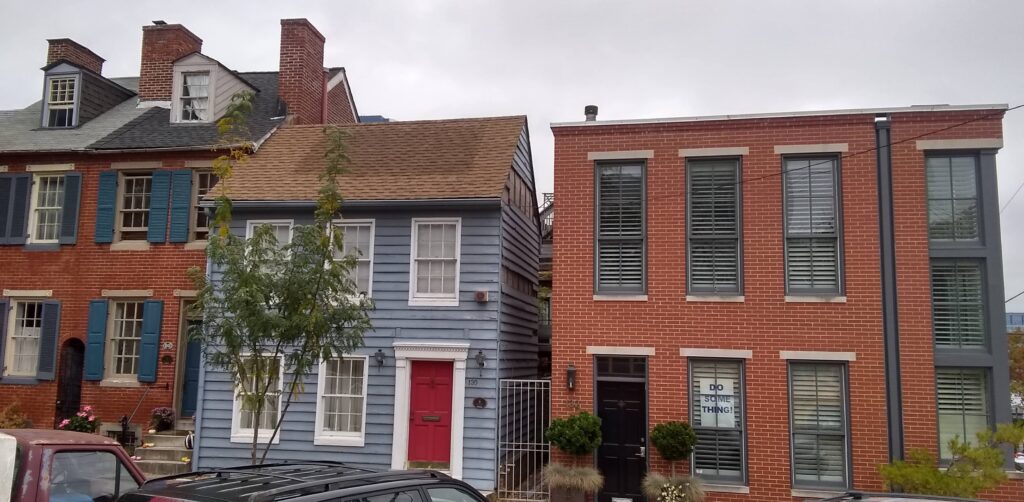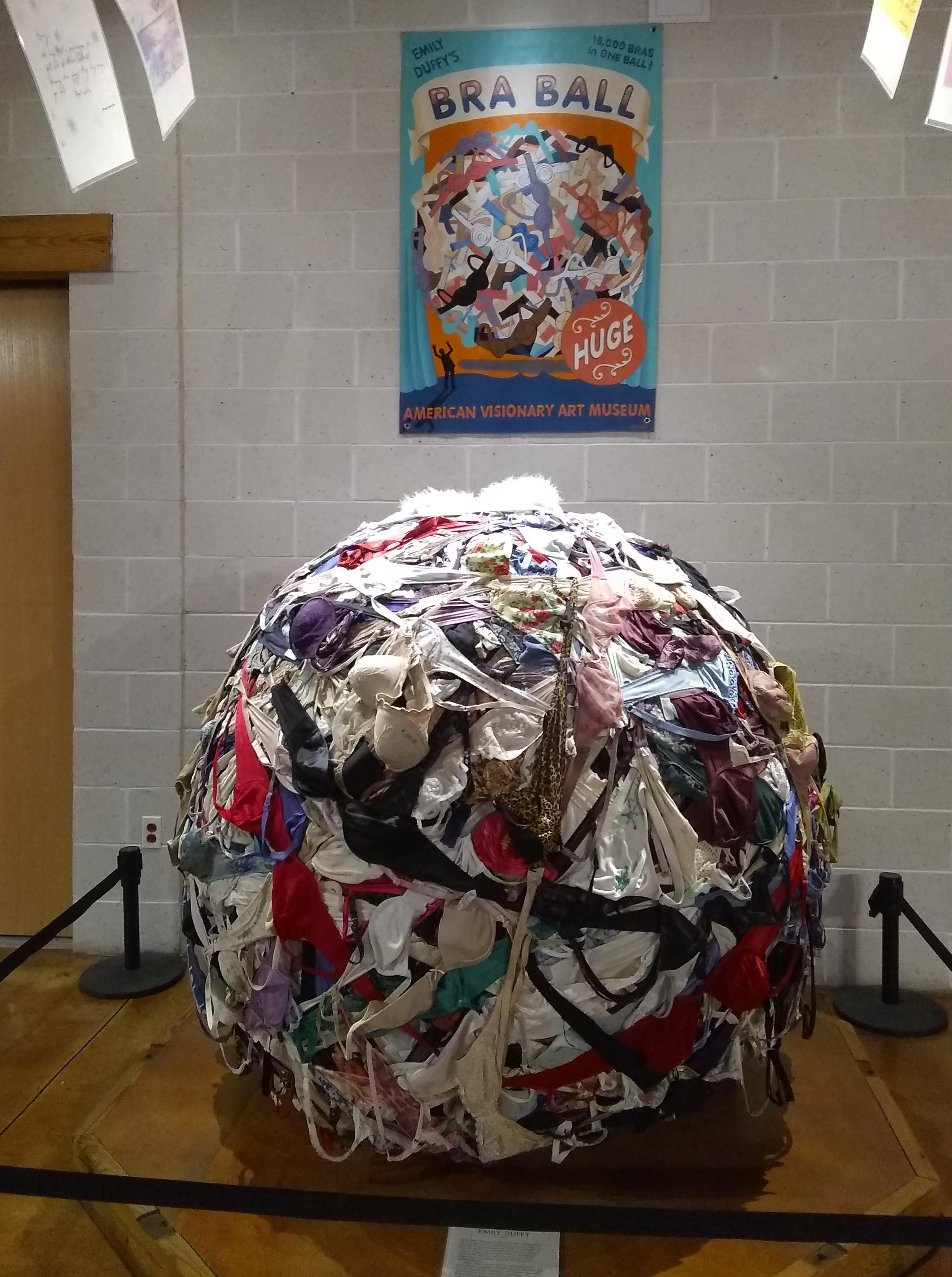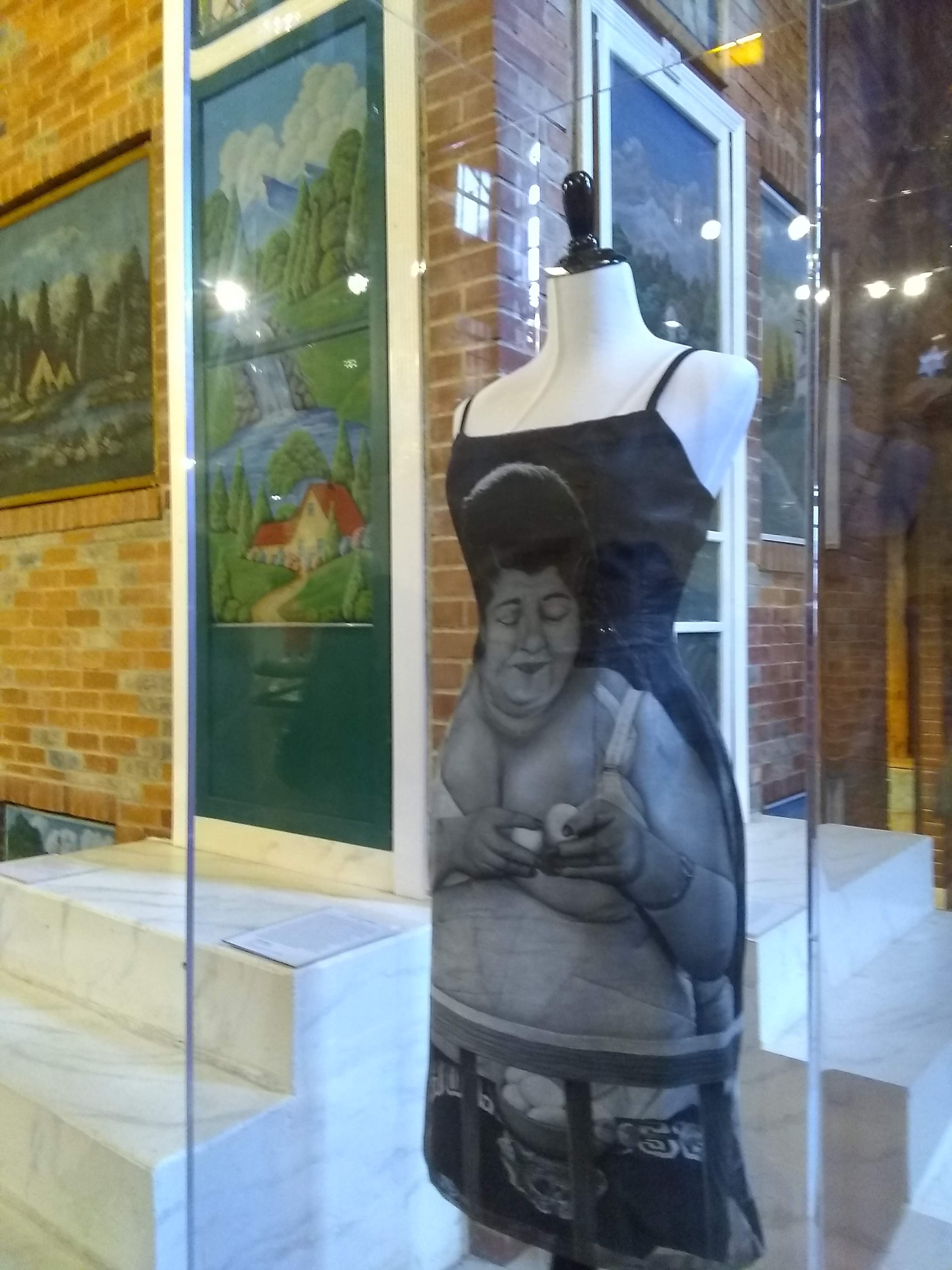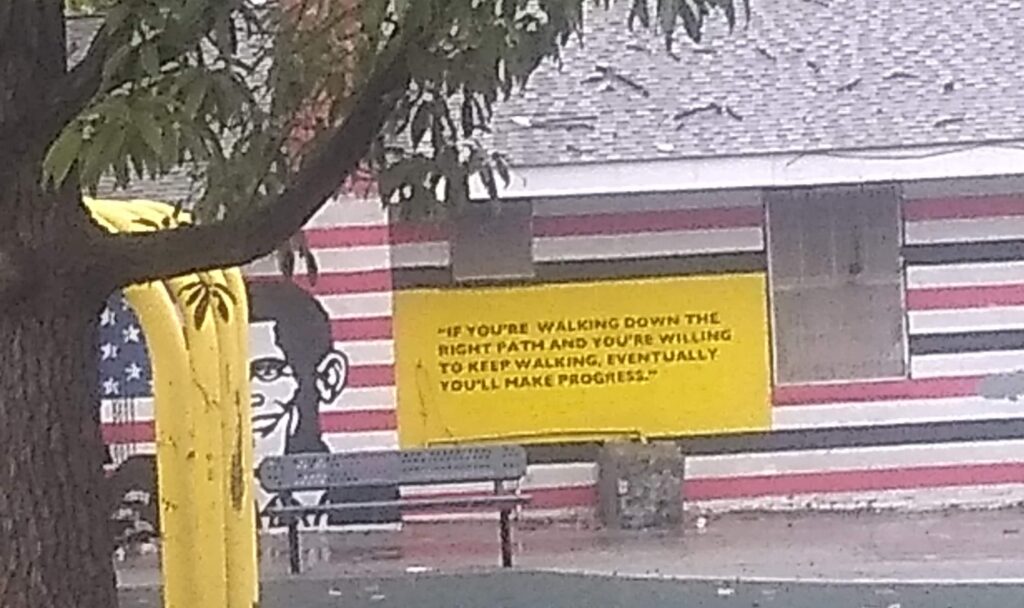Before there was a pandemic, there was the American Folklore Society Annual Meetings in Baltimore in October 2019. An hour or so from my home by car, it was an easy conference to attend, made even easier when I was invited on a panel to talk about my research. When I learned that the inestimable Elaine Eff–chronicler of Baltimore’s Painted Screens–was spearheading one of the pre-conference events that would introduce the city, I put myself in her hands, or in the hands of the driver of our big yellow school bus. The Charm City required more than an single story-teller.

We left the conference hotel at Inner Harbor and headed out to look at some of Baltimore’s oldest row houses in the Westside neighborhood, now a very affluent area of the city. Like Philadelphia, Boston and DC, from the 1790’s Baltimore relied on a ground rent system, which enabled developers to obtain the right to build a number of properties from a landholder, who then charged a ground rent to the people who bought these houses. This system enabled the building of a vast number of houses of varying sizes to meet the housing needs of people with disparate incomes. Throughout the day, as we moved from neighborhood to neighborhood, we were able to admire the construction materials and styles of different rowhouses constructed in a variety of eras, thanks to the first of our helpful guides, Dean Krimmel an expert on historic planning.

We jumped off the bus at the American Visionary Art Museum, a place that features vernacular art. We wandered around the displays, learning about the various artists and admiring their work. Elaine lectured a bit about the history of painted screens at one of the features, but there was more to come on that later.

We piled back into the school bus and meandered from neighborhood to neighborhood, learning about rowhouse construction and taking in the current variety of a form that was built around the principal of uniformity. Soon, the canvas that is Baltimore turned from rowhouses to murals painted on exposed sides of the homes. Ryan Patterson of the Baltimore Office of Promotion and the Arts guided us through the neighborhood around Pennsylvania Avenue–or Baltimore’s African-American Main Street–past a statue commemorating Billie Holiday–a local girl who made her start at the Royal Theater–through a variety of vibrant murals, over the bridge painted for peace, and into the housing estate of Freddie Gray, whose death at the hands of police officers in 2015 sparked rioting and looting in the city. At this point in the trip, we were joined by Lady Brion, founder and director of the Black Arts District, who talked with us about the efforts to heal and rebuild the area using a variety of arts. I had the pleasure of sitting with her during lunch at Nancy’s in the Station North Arts District and learned about rumor and their role in the rioting.

After a delicious meal and great conversation about resilience, we hopped back on the school bus. Local artist Joyce Scott, who would be speaking at the conference that evening, joined us for a moment to provide a blessing, then we headed to Little Bohemia, where we visited St. Wenceslaus Church, which once anchored the Czech community there. Elaine discussed the community and its worship, then we headed back out onto the neighboring streets to peek at painted screens that still dot the windows of the neighborhood, thanks to early 20th century immigrants with an artistic vision. They originated in the 18th century in Europe enabling air flow and privacy. From inside, one’s vision of the street is unobstructed. From the street, passers-by cannot see in.

Back on the bus, we wandered through the streets as Elaine pointed out the various images, their originating families, and various motifs and recurring themes. We made a final stop at the Highlandtown Gallery, where a local artist demonstrated screen painting technique and I was delighted to purchase Elaine’s book and have her sign it, as we had attended the same publishing workshop together in 2010, a program sponsored by the Folklore Studies in a Multicultural World.

It had been a full day of seeing Baltimore. The city makes a great art museum when you have the right docents. I was grateful to spend a joyous day seeing and learning about it.
